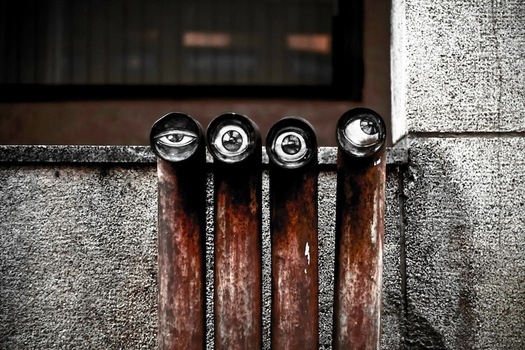
By Ernest Zacharevic. In Vilnius, Lithuania. Via Street Art Utopia.
It’s difficult to generalize about street art.
Obviously that’s not really the case. It’s not only easy to generalize about street art, it often seems to be mandatory.
Critics of street art — or graffiti — dismiss it across the board as vandalism. Their sweeping rhetoric is matched only by the many vocal advocates of street art, who insist on addressing the genre categorically, never admitting that for every brilliant piece of wildcat expression there are countless examples of visual noise.
Before I go any further I should make it clear that all the images I've collected here are examples of street art that I like quite a bit, and I want to explain why.
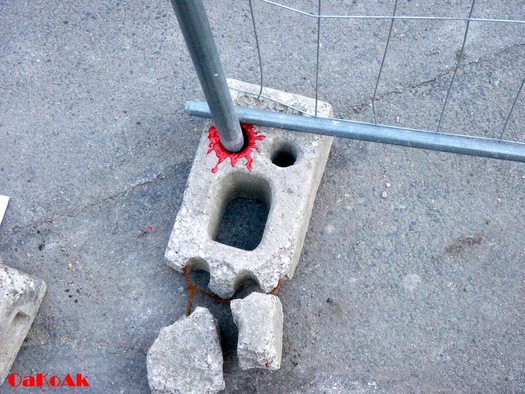
Via Street Art Utopia, which attributes this to Oakoak, in France, and offers many more examples of this artist’s street work here.
The most-is-bad-but-some-is-great point is true of any form (nobody would insist that there’s some kind of intrinsic importance to watercolors, or whatever). But street art ought to demand more rigorous distinction, given that its many aesthetic failures occur not in a notebook or even a bad gallery, but in the public sphere — on others’ property, without invitation.
I’ve struggled with this issue for years, as a very enthusiastic fan of certain street art (including completely illegal examples that I am sure opponents would consider vandalism), who nevertheless has the doubts expressed above.
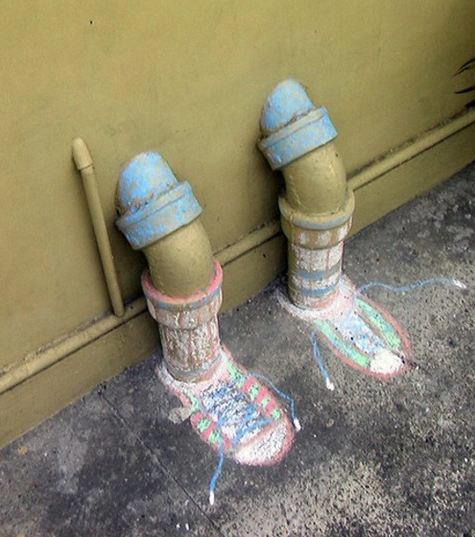
“From a Chalk Street Art Project of college students in the Philippines,” says Street Art Utopia.
A Core77 post on “creatively defaced streetscapes” from a few months ago prodded me to think about this problem again from a different angle. Specifically, it got me thinking again about categories within this thing called “street art.” (It also indirectly led me to the site Street Art Utopia, where I wallowed for hours, and collected all the images I've gathered here.)
Much street art — or, again, graffiti — is at least partly about drawing attention to its creator. Plenty has been written about that, and all I’ll add is that, again, some of my favorite street artists work quite brilliantly within that context.
Indeed, some of the examples Core77 pointed to were pretty traditional in street-art terms: “streetscapes” that had been “defaced” by way of an appealing but unsanctioned mural.
But others were united, it seemed to me, by a more specific theme: Works that played very deliberately off specific elements of the (mostly) built environment in which they existed. In other words this sub-group of pieces drew attention not just to themselves — but to their own context.
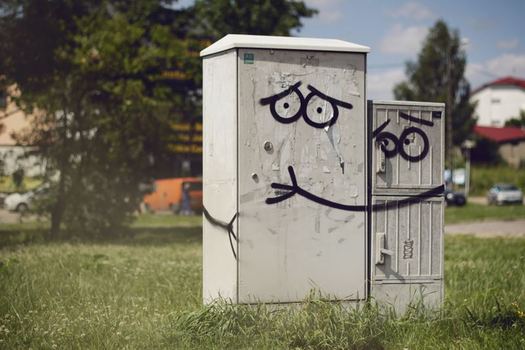
“In Olsztyn, Poland. By Adam Okuciejewski and Szymon Czarnowski,” says Street Art Utopia.
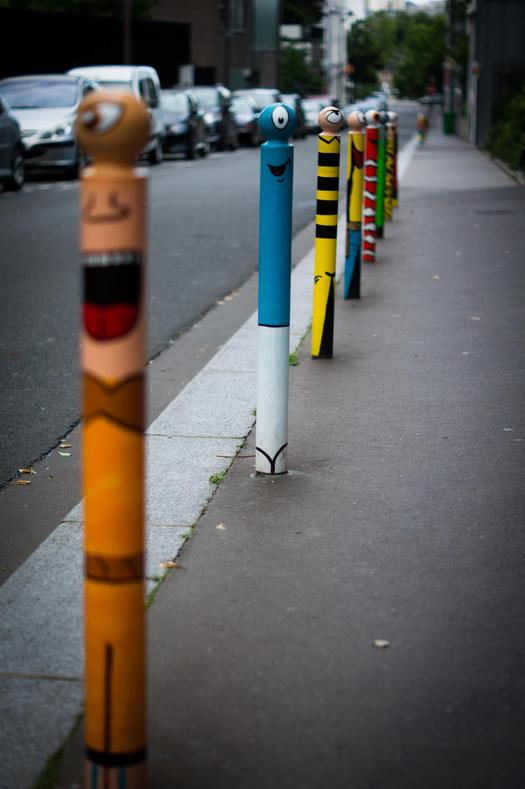
In Paris, District 13th in France, according to Street Art Utopia.
Often that meant a) spotting some feature of the constructed and/or neglected world that most of us would never notice, and b) using that overlookable thing as the starting point for transformative work.
That's the kind of material I foundmyself drawn to on Street Art Utopia, where I started collecting examples that I likeed, and that fit this particular set of parameters. You are looking at them now.
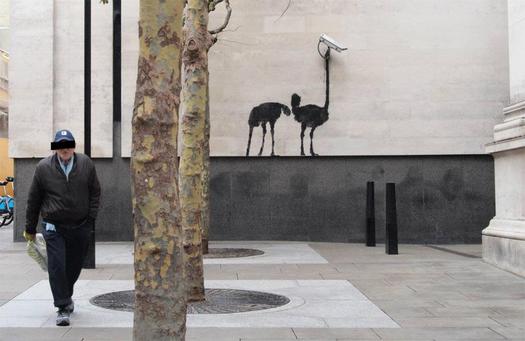
A Banksy piece, in London, per Street Art Utopia
Many achieve something that, to me, is close to magic: They zero in on the most defiantly quasi-invisible, uncharismatic elements of the quotidian city street (or other locale), and not only make them visible, but convert them into visual features.
Some do so by way of subversion. Others use visual charm. Still others provoke.
Some seem to be officially sanctioned; many clearly are not.

Via Street Art Utopia.
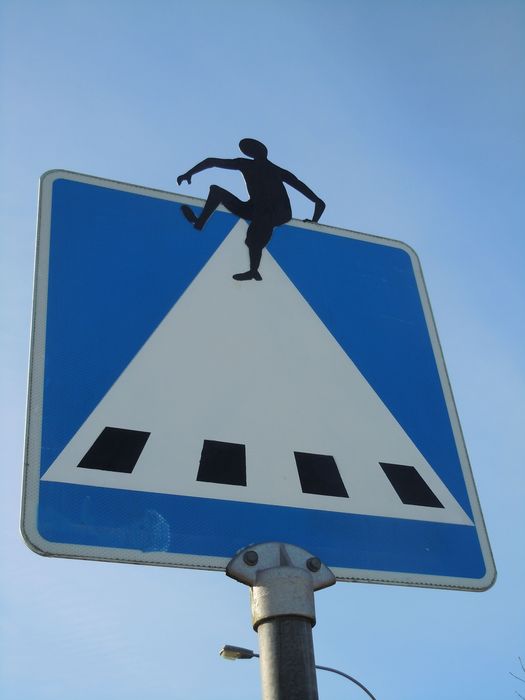 “By Pabi A in Lund, Sweden,” says Street Art Utopia.
“By Pabi A in Lund, Sweden,” says Street Art Utopia.But I think there’s a common thread here, even if the creators’ motives may differ.
For reasons noted above, street artists have historically gravitated toward fundamentally noticeable venues — hijacking a billboard that’s routinely visible to a huge audience, painting a train that moves across territories with a routine efficiency no human can match, claiming space so high that even in the most vertical city no pedestrian can miss it.
The work I've gathered here, in contrast, seems to ferret out the worst possible venues: anonymous features, routine infrastructure, outright flaws. To borrow a trendy and over-used term, these really do strike me as “interventions” in the seen (or unseen) world.
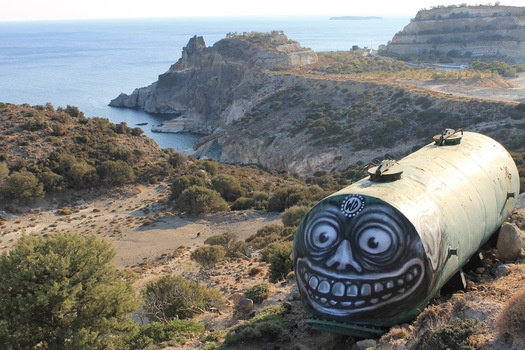
“By WD in Milos island, Greece,” according to Street Art Utopia.
So to avoid generalizing: My point here is not to criticize street art that plays out in more traditional or obvious ways. It's to praise this sub-genre that achieves something very specific, and valuable.
These examples, it seems to me, really intervene. They insert beauty and wonder into the lowliest, least spectacular, least obvious places we (fail to) see every day. They not only change the way you look at a particular feature of the streetscape, they change the way you look at the streetscape general. (Isn't every semi-invisible thing an opporunity of some sort?) They transform without sanction, and without ego. That’s delightful.
For more examples, dive into Street Art Utopia yourself.
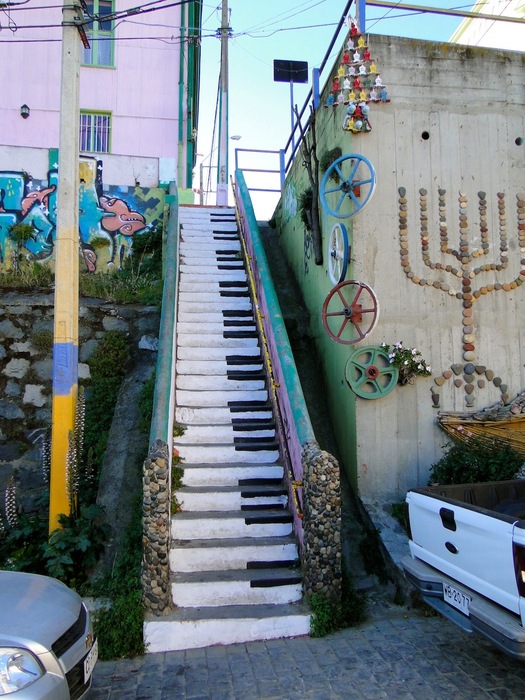
In Valparaiso, Chile. Via Street Art Utopia.

By Fauxreel, per Street Art Utopia.
